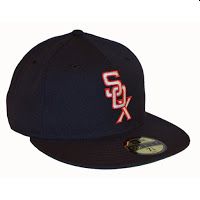Hip-hop collective Pro
Era applied to register the mark PRO ERA for
various clothing items, including hats and caps, but was foiled by
Opposer New Era Cap, who for decades has extensively used,
promoted, and protected its registered mark NEW
ERA in connection with caps. The Board rejected
Opposer's claim to ownership of a family of ERA-formative mark,
but found the NEW ERA mark to be conceptually strong with a
"relatively high degree of fame or commercial strength,"
and similar overall to the PRO ERA mark in sound, appearance,
connotation, and commercial impression. New Era Cap Co., Inc. v. Pro Era, LLC,
Opposition No. 91216455 (May 29, 2020) [precedential] (Opinion by
Judge Angela Lykos).

Family of Marks: Opposer New Era's claim to a family of marks was based on its use and promotion of marks such as DRYERA, COOLERA, SOLARERA, WINTERERA, DIAMOND ERA, and MICROERA in connection with hats and caps, prior to Pro Era's filing date. The Board noted that although the USPTO may register several individual marks that include a family element, it does not register "families" of prefixes, suffixes, or other components of a mark. "Thus, an opposer relying on a family of marks is relying on common law rights in the alleged family."
The seminal case on the family of marks issue is J & J Snack Foods Corp. v. McDonald's Corp., 932 F.2d 1460, 18 USPQ2d 1889, 1891-92 (Fed. Cir. 1991: "[a] family of marks is a group of marks having a recognizable common characteristic, wherein the marks are composed and used in such a way that the public associates not only the individual marks, but the common characteristic of the family, with the trademark owner."
J&J Snack Foods pointed out that it is not enough to merely use a series of marks. The relevant public must recognize that the common characteristic is an indicator of source for the goods or services.
In order to rely on an ERA family of marks, New Era had to prove the existence of the family of marks prior to Pro Era's priority date. See Hester Indus. Inc. v. Tyson Foods Inc., 2 USPQ2d 1645, 1647 (TTAB 1987); TPI Holdings, 126 USPQ2d at 1419-20.
The Board, with little discussion, found New Era's testimony on this issue to be vague and ambiguous, and in part relating to its use of marks only after applicant Pro Era's constructive first use date. Consequently, the Board concluded that New Era had failed to carry its burden to prove that it owned a family of ERA-formative marks.
 Family of Marx
Family of Marx
Likelihood of Confusion: Opposer has used its mark NEW ERA since the 1930s in connection with caps, and has enjoyed a long-standing relationship with Major League Baseball and professional football, as well as other sports. It promotes its goods in various ways, including during broadcasts of sports events. The mark "enjoys a vibrant media following" and has received recognition in nationwide media. New Era aggressively polices the mark against infringement. Applicant Pro Era pointed out the absence of survey evidence, but the Board observed that such evidence is not required to prove whether a mark is famous.
Pro Era argued that third-party registrations weakened the NEW ERA mark but the Board was unmoved, since there were only four relevant marks and no evidence of actual use: far short of the extensive third-party evidence in Jack Wolfskin and Juice Generation.
The Board concluded that the NEW ERA mark "falls on the much higher end of the commercial strength spectrum." In short, "Opposer's NEW ERA mark is a strong mark entitled to a broad scope of protection."
The fact that the involved goods overlap weighed heavily in New Era's favor. Moreover, as to the marks, the Board noted that a lesser degree of similarity is needed to support a finding of likely confusion when the goods are (in part) identical.
 White Sox, circa 1959
White Sox, circa 1959
Applicant argued that PRO ERA is an abbreviation for "Progressive Era" and so the marks have different meanings and connotations. However, there was no evidence that consumers are likely to so perceive the PRO ERA mark. Moreover, the word PRO could be seen as an abbreviation for "professional."
The Board acknowledged that consumers are likely to focus on the first part of a trademark, but here the marks are similar in structure and end with the same word. The word PRO has a laudatory connotation and is therefore less likely to form a strong impression on consumers seeking to distinguish similar marks. Give the strength of the NEW ERA mark, consumers are likely to see the PRO ERA brand as an extension of the NEW ERA product line.
The Board concluded that the marks are similar in appearance, sound, connotation, and commercial impression.
Pro Era contended that the "focused needs" of the intended consumers of the goods are distinct and divergent. The Board, however, pointed out that there are no limitations in the opposed application or cited registration that would make those distinctions relevant.
In contrast, as to the lack of evidence of actual confusion, the Board looked to the marketplace conditions and noted that applicant's clothing items are sold as collateral items to its music services, at concerts, on its website, and in various social media platforms. Opposer New Era likewise has a strong media presence, and markets limited edition caps at music festivals. Both applicant and opposer have been involved in the SXSW Music Festival.
The Board found insufficient evidence to allow it to determine the extent of use of applicant's mark. There was no evidence indicating that the goods of the parties are of inferior quality, which makes it less likely that instances of confusion will be reported. Therefore the Board found this factor to be neutral.
Balancing the relevant du Pont factors, the Board found confusion likely, and it sustained the opposition.
 Family of Marx
Family of Marx
Read comments and post your comment here.

Family of Marks: Opposer New Era's claim to a family of marks was based on its use and promotion of marks such as DRYERA, COOLERA, SOLARERA, WINTERERA, DIAMOND ERA, and MICROERA in connection with hats and caps, prior to Pro Era's filing date. The Board noted that although the USPTO may register several individual marks that include a family element, it does not register "families" of prefixes, suffixes, or other components of a mark. "Thus, an opposer relying on a family of marks is relying on common law rights in the alleged family."
The seminal case on the family of marks issue is J & J Snack Foods Corp. v. McDonald's Corp., 932 F.2d 1460, 18 USPQ2d 1889, 1891-92 (Fed. Cir. 1991: "[a] family of marks is a group of marks having a recognizable common characteristic, wherein the marks are composed and used in such a way that the public associates not only the individual marks, but the common characteristic of the family, with the trademark owner."
J&J Snack Foods pointed out that it is not enough to merely use a series of marks. The relevant public must recognize that the common characteristic is an indicator of source for the goods or services.
Recognition of the family is achieved
when the pattern of usage of the common element is sufficient to be
indicative of the origin of the family. It is thus necessary to
consider the use, advertisement, and distinctiveness of the marks,
including assessment of the contribution of the common feature to
the recognition of the marks as of common origin.
In order to rely on an ERA family of marks, New Era had to prove the existence of the family of marks prior to Pro Era's priority date. See Hester Indus. Inc. v. Tyson Foods Inc., 2 USPQ2d 1645, 1647 (TTAB 1987); TPI Holdings, 126 USPQ2d at 1419-20.
The Board, with little discussion, found New Era's testimony on this issue to be vague and ambiguous, and in part relating to its use of marks only after applicant Pro Era's constructive first use date. Consequently, the Board concluded that New Era had failed to carry its burden to prove that it owned a family of ERA-formative marks.
 Family of Marx
Family of MarxLikelihood of Confusion: Opposer has used its mark NEW ERA since the 1930s in connection with caps, and has enjoyed a long-standing relationship with Major League Baseball and professional football, as well as other sports. It promotes its goods in various ways, including during broadcasts of sports events. The mark "enjoys a vibrant media following" and has received recognition in nationwide media. New Era aggressively polices the mark against infringement. Applicant Pro Era pointed out the absence of survey evidence, but the Board observed that such evidence is not required to prove whether a mark is famous.
Pro Era argued that third-party registrations weakened the NEW ERA mark but the Board was unmoved, since there were only four relevant marks and no evidence of actual use: far short of the extensive third-party evidence in Jack Wolfskin and Juice Generation.
The Board concluded that the NEW ERA mark "falls on the much higher end of the commercial strength spectrum." In short, "Opposer's NEW ERA mark is a strong mark entitled to a broad scope of protection."
The fact that the involved goods overlap weighed heavily in New Era's favor. Moreover, as to the marks, the Board noted that a lesser degree of similarity is needed to support a finding of likely confusion when the goods are (in part) identical.
 White Sox, circa 1959
White Sox, circa 1959Applicant argued that PRO ERA is an abbreviation for "Progressive Era" and so the marks have different meanings and connotations. However, there was no evidence that consumers are likely to so perceive the PRO ERA mark. Moreover, the word PRO could be seen as an abbreviation for "professional."
The Board acknowledged that consumers are likely to focus on the first part of a trademark, but here the marks are similar in structure and end with the same word. The word PRO has a laudatory connotation and is therefore less likely to form a strong impression on consumers seeking to distinguish similar marks. Give the strength of the NEW ERA mark, consumers are likely to see the PRO ERA brand as an extension of the NEW ERA product line.
The Board concluded that the marks are similar in appearance, sound, connotation, and commercial impression.
Pro Era contended that the "focused needs" of the intended consumers of the goods are distinct and divergent. The Board, however, pointed out that there are no limitations in the opposed application or cited registration that would make those distinctions relevant.
In contrast, as to the lack of evidence of actual confusion, the Board looked to the marketplace conditions and noted that applicant's clothing items are sold as collateral items to its music services, at concerts, on its website, and in various social media platforms. Opposer New Era likewise has a strong media presence, and markets limited edition caps at music festivals. Both applicant and opposer have been involved in the SXSW Music Festival.
The Board found insufficient evidence to allow it to determine the extent of use of applicant's mark. There was no evidence indicating that the goods of the parties are of inferior quality, which makes it less likely that instances of confusion will be reported. Therefore the Board found this factor to be neutral.
Balancing the relevant du Pont factors, the Board found confusion likely, and it sustained the opposition.
 Family of Marx
Family of MarxRead comments and post your comment here.
The content of this article is intended to provide a general guide to the subject matter. Specialist advice should be sought about your specific circumstances.
